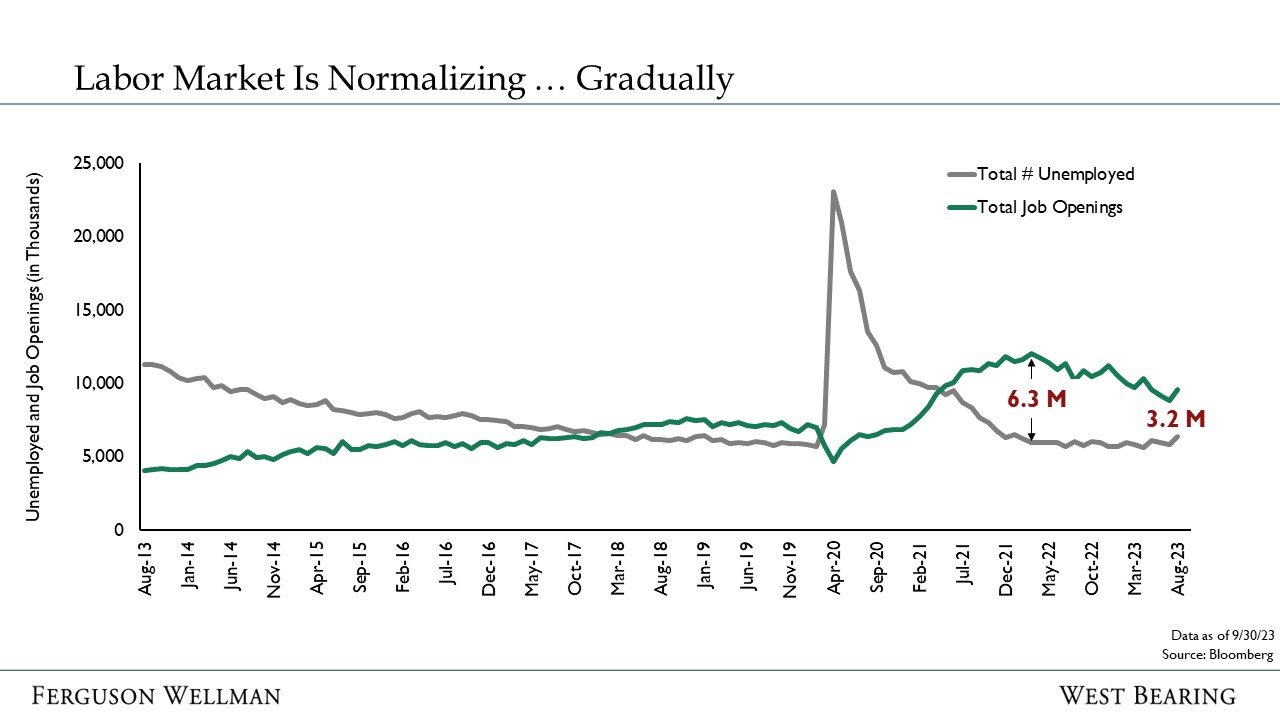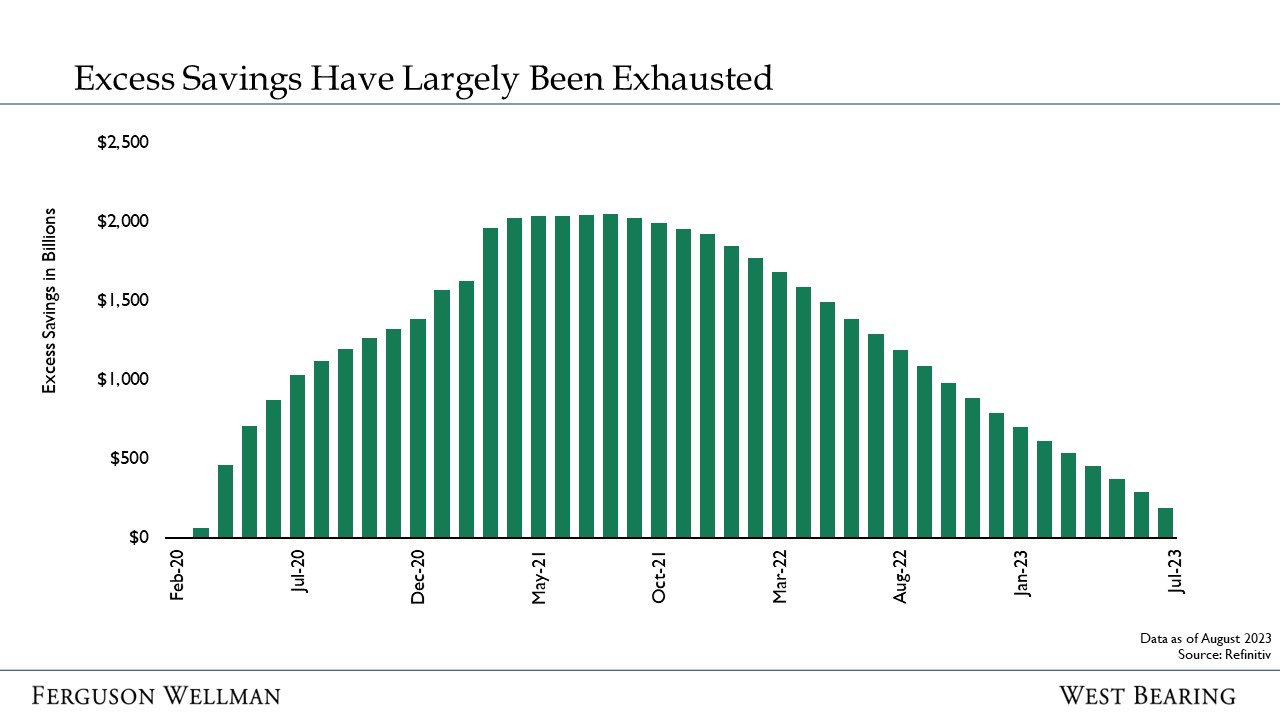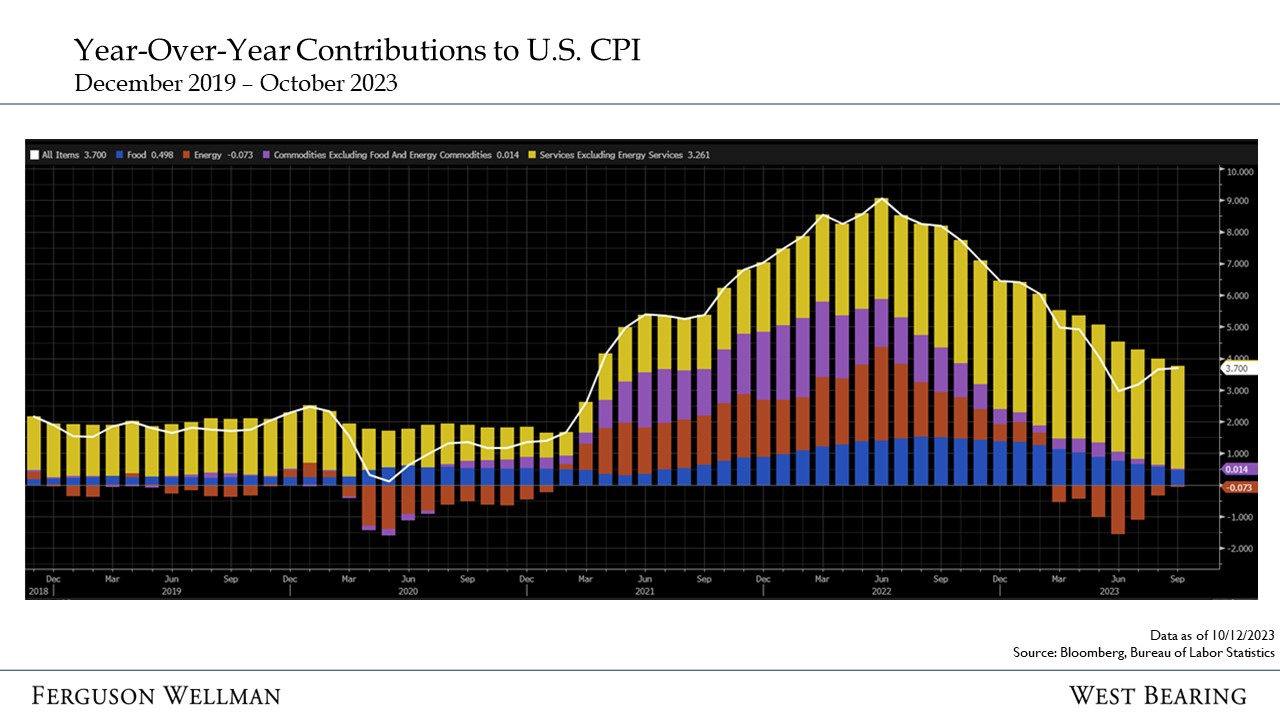
by Ralph Cole, CFA Director, Equity Strategy and Portfolio Management Ferguson Wellman Capital Management
In the 1970s, Heinz Ketchup made the slow-moving condiment worth waiting for through Carly Simon’s hit, “Anticipation.” From an economic perspective, the most anticipated recession in history has yet to occur, and we’ll have to wait until 2024 to see if it indeed manifests itself or not. While the Fed continues its battle to extinguish the remnant flames of inflation, the economy has remained surprisingly resilient amid a normalizing job market that still enjoys more job openings than there are unemployed to fill them.

As we review our outlook both nationally and locally, we are struck by the similarities between the two. Tight employment markets and stubborn inflation are the two themes coloring the 2024 outlook for the U.S. and here in Central Oregon.
Excessive job demand associated with unprecedented COVID-era stimulus has significantly moderated in the wake of 11 Federal Reserve interest rate increases since last spring. Given the benefit of this large cushion of available jobs, so far, the central bank is achieving its goal of taming inflation and bringing the labor market into balance without tipping the economy into recession. Gainfully employed, U.S. consumers remain the key driver of what has proven to be persistent GDP growth. However, extra savings from government handouts are now mostly depleted. Going forward, consumption spending is likely to be more closely tied to job-related income.

Recognizing the lag with which higher interest rates impact the economy, we remain vigilant about stiffer macroeconomic headwinds in the offing. Money supply is contracting for the first time since the 1930s, banks are less prone to make loans amid scarcer deposits and the manufacturing sector is now in recession.
The Federal Reserve’s number one job throughout 2023 has been to lower inflation to its preferred target of 2.5%. The Fed has come a long way toward reaching that goal, but the last 1-to-2% will be the hardest to achieve. Below is a chart of the Consumer Price Index (CPI) going back to just prior to the pandemic. When people were trapped in their homes, inflation was very much under control. Consumers were building excess savings because they simply didn’t have anything to spend money on compared to pre-pandemic times. Once consumers left their homes, they began spending more on goods and accelerating inflation in 2021, as seen in the purple bars below. Spending on goods peaked in 2022, and people started spending heavily on services and housing, as seen in the yellow bars, which again was very inflationary.
Service inflation is viewed as very sticky. Most service industries are very labor intensive and with our tight labor market, costs have increased across the board in many industries. We are seeing more labor negotiating power with the renewed clout of unions around the country. This will likely cause inflation to linger longer.

All of these trends are consistent with what we are experiencing here in Oregon. Our state and Deschutes County in particular have very low unemployment. Workers will continue to have more bargaining power with employers than would normally occur this far into a Fed tightening cycle. Another component to services inflation is the cost of housing. Rents have been very sticky this cycle, as have home prices. This too will keep inflation higher than the Fed wants for longer.
Pundits have been calling for a recession for more than a year now, and we have yet to experience one. We think 2024 will be the year that we have either a “soft” or “hard” landing. A soft landing is merely a slowdown in the overall economy, with unemployment rising from 3.7% to 4.5%. A hard landing would imply more layoffs and unemployment rising above 6%. We remain in the soft-landing camp, but no doubt there are plenty of tailwinds and headwinds the economy is facing at this juncture.

We strongly believe interest rates will continue to remain higher for the foreseeable future. When the Fed does eventually lower interest rates, the bottom in rates will be much higher than we experienced after the great financial crisis and the pandemic. Zero-percent, short-term interest rates are not normal for an economy. Savers are forced to take more risk to get a return on their savings and businesses and governments take on excess leverage because there is virtually no cost to doing so. With higher interest rates, we’ll experience the risks and rewards associated with excess leverage in the system.
Looking ahead, the risk for investors is that corporate profits fall victim to waning sales and weaker profit margins, which would in turn lead to job cuts, a broader economic downturn, and ultimately, lower stock prices. Therefore, at this more advanced stage of the economic cycle, we are paying particularly close attention to our dashboard of leading economic indicators and such measures as weekly jobless claims, corporate earnings and credit spreads. At the moment, they are all on good footing.
For now, caution and patience are advisable as the full effects of the Fed’s formidable rate hiking campaign won’t be realized until 2024.
Ralph Cole, CFA, serves on the board of directors for Ferguson Wellman Capital Management, an investment advisory firm managing $7.5 billion for 982 clients, including $157 million for individual and institutional clients in Central Oregon. (data as of September 30, 2023)






0 Comments